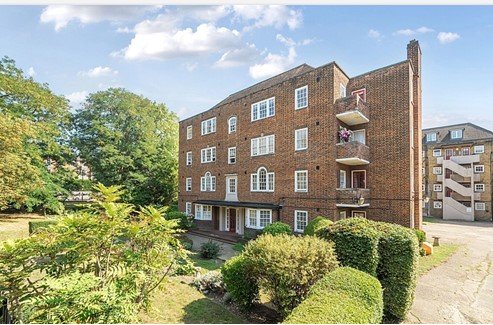You might ask yourself, “What is a loan against property, and why does it matter?” If you have a property and want to fund a large project, meet unexpected expenses, or consolidate debt, a loan against property (LAP) can be your answer.
Let’s understand the lap loan meaning. This is a secured loan where you pledge your property as collateral. It may be your house, land, or even commercial property. The idea is simple: use the worth of your property to borrow funds that can be spent on anything you wish for.
When taking out this type of loan, you can expect to receive 70-75% of the security’s market value. Sounds great? Let’s explore the lap loan meaning and how this works.
How Does a Loan Against Property (LAP) Work?
When you decide to get this type of credit, you put your residential/commercial property at risk in exchange for money from the lender. This means the lending institution will hold ownership documents until the debt is completely repaid.
Don’t worry, though – it doesn’t mean you lose control over the property when repayments are made. You get to use your property in the same way, just like before, but with one exception – its title deed will be held by a bank or a lending organisation throughout the duration of the credit agreement.
This process starts with filling out an application form for a loan and submitting all required paperwork, including evidence that one possesses real estate. If everything checks out properly, the lender sanctions the loan. A direct transfer into your account usually happens after all paperwork has been settled.
When considering a loan against property, it’s crucial to weigh the benefits and risks carefully. This type of loan can provide substantial funds for various needs, but it also involves the risk of losing your property if repayments are not met. For those struggling with multiple debts, it might be beneficial to explore options to get your financial debt assistance. This can help streamline your financial obligations and potentially reduce the burden of high-interest rates. By consolidating debts, you can focus on a single repayment plan, making it easier to manage your finances and protect your assets.
Types of Loan Against Property (LAP) You Should Know About
Different types of LAPs depend on what you intend to do with the money. Here they are:
1) Loan Against Residential or Commercial Property
This is the most popular form of loan against property where residential and commercial properties can be used as security. This form of LAP is a great choice if you need a huge amount of cash and are willing to put your home or business property on the line.
2) Loan for Lease Rental
If you own a property that gives rental income, this type of loan enables you to use such rent collections to secure a credit facility for yourself. The lender considers potential rental income over an agreed period and lends on these terms. Although you continue collecting rent, it goes directly into repaying the loan until it is fully paid.
3) Loan for Purchasing Commercial Property
Thinking about expansion? Old property can be used as collateral in exchange for a new commercial one with this kind of LAP. It’s a good way to move your office space to another area which will support other operations.
Benefits of Choosing a Loan Against Property
Now that you know the lap loan meaning, let’s discuss the benefits. Why would one choose a loan against property instead of personal/business loans? Here’s why:
1) Higher Loan Amounts
Since LAP is a secured loan, lenders are more willing to offer you a larger sum — typically up to 70-75% of your property’s market value. This is significantly higher than you’d get with collateral free loans, like personal ones.
2) Lower Interest Rates
Lower interest rates are among the biggest advantages of a LAP loan. Since it’s your property that secures the loan, there is less risk for the lender, which translates to reduced interest rates. This implies lower EMIs and lesser financial burden over the life of the loan.
3) Flexible Repayment Terms
Loan against property usually comes with repayment tenures that are longer than standard loans and can be go to 15 years in some cases. With such flexibility, it becomes easier to manage your monthly budget, thus reducing the chances of default.
4) Use the Funds However You Like
There are no restrictions on what you should do with a LAP loan as long as you can renovate your house, start a business, or meet hospital bills. It is all left to your discretion.
Risks and Considerations While Selecting a Loan Against Property
Borrowing always comes with risks, including a loan against property. You must consider these factors before making a final decision —
1) Risk of Losing Your Property
This is the biggest fear when taking out a LAP loan. If you miss paying EMIs, the lender can take over your property and sell it to recover the money. Therefore, properly considering one’s financial status cannot be overlooked at any cost.
2) Property Valuation Issues
The amount of money you will get from a LAP loan depends on how much value is attached to your property in the market. However, property valuation can sometimes be tricky and vary between lenders. Getting an accurate assessment and even a second opinion is essential to avoid surprises.
3) Approval Process Can Be Lengthy
Unlike unsecured loans, which you can get almost instantly, a loan against property involves a detailed verification process, including property evaluation and legal checks. This means it might take longer to get the funds, which could be an issue if you need money urgently.
4) Floating Interest Rate
If you opt for a floating interest rate, remember that your monthly payments could increase if interest rates rise. This is something to consider if you prefer stability in your financial planning.
LAP vs. Collateral-Free Loans: What’s the Difference?
You might wonder how a loan against property stacks up against collateral-free loans. Although both LAP and collateral-free loans allow flexible use of funds, there are significant differences between the two. Here’s a quick comparison —
- Loan Amount: LAP offers higher amounts (up to 70-75% of property value) than collateral-free loans.
- Interest Rates: LAP typically has lower interest rates (7-10%) than collateral-free loans.
- Repayment Tenure: LAP offers longer repayment periods (up to 15 years).
- Collateral: LAP requires property as collateral, while collateral-free loans do not.
Conclusion
A loan against property can be a great option if you need a large sum of money at a lower interest rate. It’s especially beneficial if you’re looking for flexibility in using the funds and want to spread the repayments over a longer period. However, it’s not without risks. So, before you proceed, ensure you’re comfortable with the commitment and confident in your ability to repay the loan. Ultimately, the effectiveness of an LAP loan varies depending on your personal needs and financial situation.
Refresh Date: August 21, 2025










